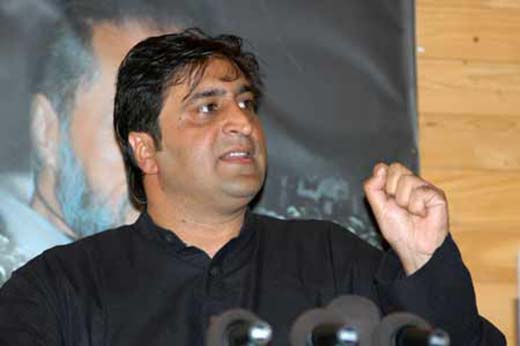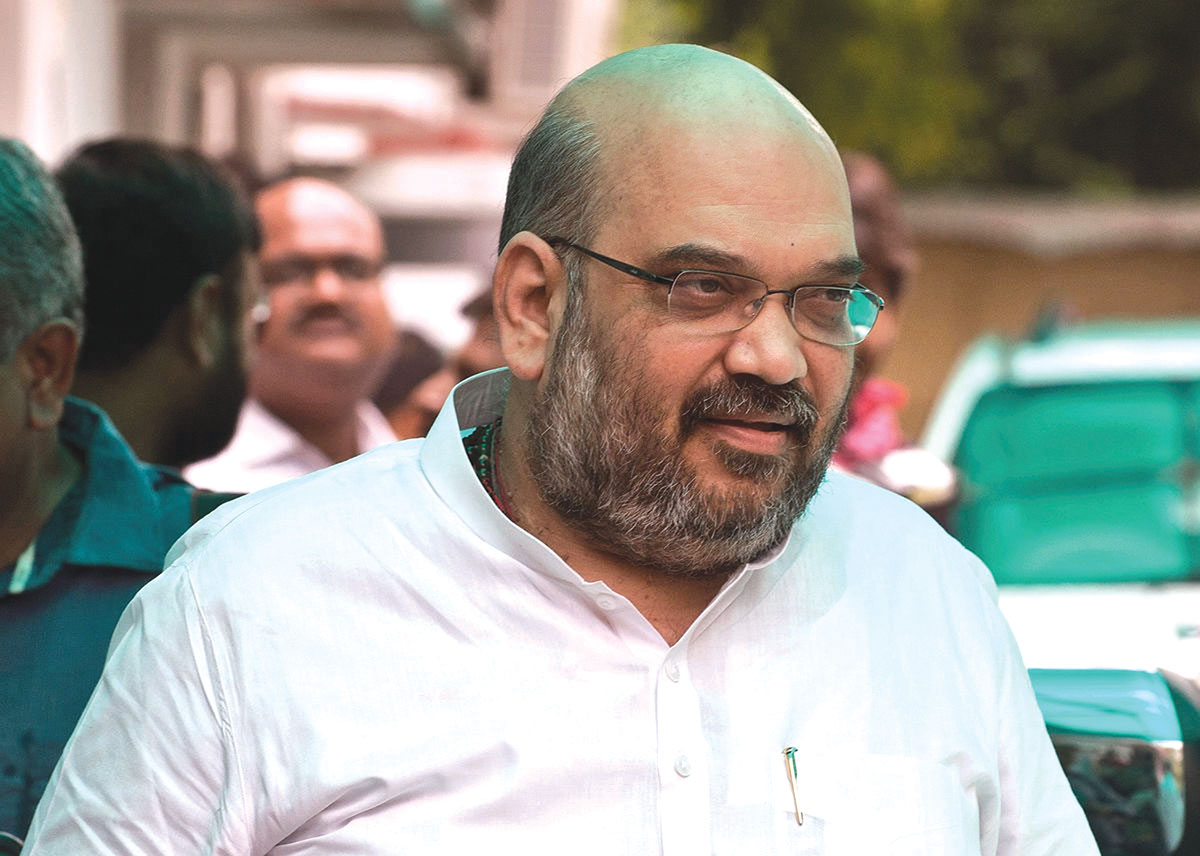
By A Special Correspondent
KL NEWS NETWORK
SRINAGAR
Even though RSS has put breaks on the conduct of Abhinavgupt yatra to the central Kashmir Beerwah township, authorities here ensured there is no movement towards the dilapidated cave which could trigger a crisis.
Angry over the sudden hype, residents said the cave is more of a leopard rest house than a sacred spiritual space. They said the cave might have been in use of saints from diverse faiths, but its status has remained unaltered for various lifetimes.
Authorities on Saturday put up drop-gates on all the entry routes to ensure that no “yatri” tries to get in and create a spectacle. The host population is completely against the idea of holding yatra to the cave that was initiated by Delhi based NGO organization Acharaya Abhinav Gupt Sheshadri Samroh Samiti.
On Sunday when tens of thousands of Kashmir Pandits were busy in Khir Bhawani in Tulmulla, a dozen individuals tried to get into Beerwah. They were immediately detected and send back.
“It is no sacred,” resident Mohammad Yousuf said. “It in fact is the den for leopards. Last year, at least one leopard was caught by the wildlife authorities on the mouth of the cave when it was coming out to attack the population.” Yousuf said the cave is the main source of rodents and snakes in the town. He said the cave is normally a huge refuge for the wildlife and deserves to be treated like that.
It is a long cave of uneven size inside, a Beerwah resident who has entered the cave many times said. “Once you get in, it suddenly opens into a wide cave but as you move ahead, it gets narrow and suffocating,” the resident, who wishes not to be identified, said. “At certain places, one has to get in by squeezing to fit a hole.” The resident said that the cave has two smaller caves inside and in all there are three exits including the main entry. The two other exits are unfit for human use, unlike wildlife.
Prior to militancy, residents said they would get a group of foreign visitors, once in a blue moon. “They would normally be explorers and would be helped by locals to get into it and explore,” the resident said. “Honestly, it is a hillock that is hollowed inside.”
The cave was in news on May 9, 2014, a day after the High Court directed government to stop quarrying around the cave. The directions to make 400-500 meters around the cave no-quarrying belt, came as Division Bench of Chief Justice M M Kumar and Justice Muzaffar Hussain Attar disposed off the PIL of
Vir Saraf and Tanveer Hussain Khan. The duo had sought directions for protecting the “Abinavgupta cave” and declaration of it as an ancient monument site.

In their response, officials from state’s Archives, Archaeology and Museums department had invoked the widely held Hindu legend that Shaivite philosopher Abinavgupta was last seen praying in the cave. Revenue authorities led by Divisional Commissioner Kashmir also traced some records suggesting that a Rianwari saint had migrated to the area and was praying in the cave on Koh-e-Beeru, the Beerwah mountain. Disposing the Public Interest Litigation, the bench directed Deputy Commissioner to protect the cave against quarrying and consider the request within the framework of law.
Abhinavagupta (950 – 1016 AD) was Shaivite philosopher, mystic, musician, poet, and dramatist who is reported to have had 35 major works to his credit. The Hindu myth suggests that he went for prayers with 1200 of disciples to the cave and never returned. He died issueless.

The locals see the use of the medieval Kashmir scholar’s name to create a new pilgrimage as a political ambition. Molvi Abdul Lateef Bukhari who has been representing the belt on this issue said that the court has passed a judgement on January 14, 2015 terming the claims as concoction lacking any historical relevance. The court refused to declare it a heritage site. There is evidence of a Saint Mian Shah Sahab praying in the cave but does not make it the property of any faith. “We are not going to give the cave in illegal possession against the will of the local population,” Bukhari was quoted saying.
“The court had directed Deputy Commissioner Budgam to record evidences and conduct a thorough examination of the site to ascertain as to whether the cave bears significance of being announced as heritage site or not,” Bukhari said. “The court as such rejected the plea after observing that the cave is cylindrically constricted hence not sufficient for entry of 1200 people.”
Interestingly, Beerwah is being represented by Omar Abdullah, former Chief Minister. He has stayed away from the controversy that his constituency is confronted with.
The proposed yatra had snowballed into a major controversy with all the stakeholders in Kashmir against the idea. It was being seen as “cultural aggression” and Delhi’s effort to create another yatra. It was at the peak of this pressure that the PDP government took up the issue with its ally and the RSS was immediately advised against the idea. It was only after that the government took a stand against the yatra. Scenes in the state legislature were witness to the fact that BJP ensured its members not to rake the issue up. On Friday when three BJP lawmakers in state legislative council including Ajatshatru Singh and Surinder Ambardar (the architect of the idea) were on their legs to tell Kashmir that they should not disown their history, Deputy Chief Minister Dr Nirmal Singh literally forced them to sit down.
Acharya Abhinav Gupt Sheshadri Samroh Samiti, the NGO that wanted to hold the yatra is headed by Art of Living founder, Sri Sri Ravi Shankar, a frequent guest to some of the Hurriyat leaders. He had a meeting with Mirwaiz Umer Farooq early this week.
With yatra not being permitted, Sri Sri presided over a function of Abhinav Gupt Sandesh Yatra at Zeshta Devi Mandir and paid tributes to the eleventh century scholar. “Abhinavagupta is the greatest symbol of Kashmir’s identity as a knowledge centre,” Sri Sri was quoted saying. “Abhinavagupta is part of Kashmiryat. Kashmiri youth should join the yatra and take proud of this ancient scholar. The Kashmiri youth should also feel proud of their rich culture.” Sri Sri said that while entire world knows about the 11th century scholar, Kashmir is unaware of him.
Interestingly, Kalhana who wrote his magnum opus Rajatarangni after Abhinavagupta’s death, has not mentioned him at all. This has puzzled many scholars of Hindu mythology and history.
Abhinavagupta is considered a major Shivite authority but has mostly been rediscovered by Swami Lakshmanjoo, who died in 1991. He has translated Abinavagupta’s the Spanda Kārika and the Spanda Sandoha which are considered a key resource by Shiavite followers. An NGO is based in Los Angeles to propagate the contributions of Abhinavagupta and Lakshmanjoo through Universal Shaiva Fellowship and Lakshamnajoo Academy.















